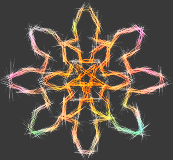authors
Kathryn M. Nelson
 ,
Jonathan Bisson
,
Jonathan Bisson
 ,
Gurpreet Singh
,
Gurpreet Singh
 ,
James G. Graham
,
James G. Graham
 ,
Shao-Nong Chen
,
Shao-Nong Chen
 ,
J. Brent Friesen
,
J. Brent Friesen
 ,
Jayme L. Dahlin
,
Jayme L. Dahlin
 ,
Matthias Niemitz
,
Matthias Niemitz
 ,
Michael A. Walters
,
Michael A. Walters
 ,
Guido F. Pauli
,
Guido F. Pauli

journal Journal of Medicinal Chemistry
subjects Pharmacognosy IMPS Artifacts Cannabis
journal Journal of Medicinal Chemistry
subjects Pharmacognosy IMPS Artifacts Cannabis
This Perspective of the published essential medicinal chemistry of cannabidiol (CBD) provides evidence that the popularization of CBD-fortified or CBD-labeled health products and CBD-associated health claims lacks a rigorous scientific foundation. CBD’s reputation as a cure-all puts it in the same class as other “natural” panaceas, where valid ethnobotanicals are reduced to single, purportedly active ingredients. Such reductionist approaches oversimplify useful, chemically complex mixtures in an attempt to rationalize the commercial utility of natural compounds and exploit the “natural” label.
Read More...

